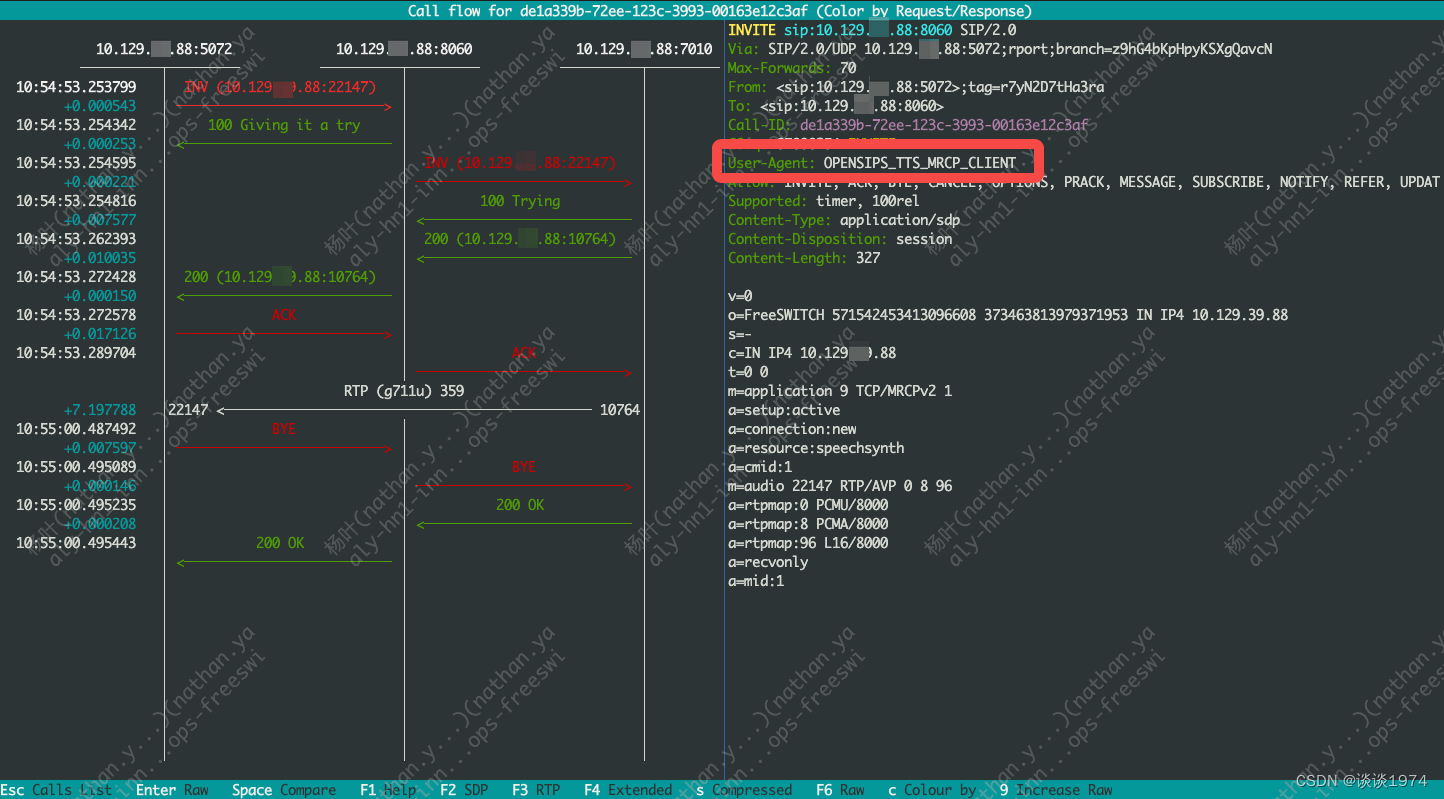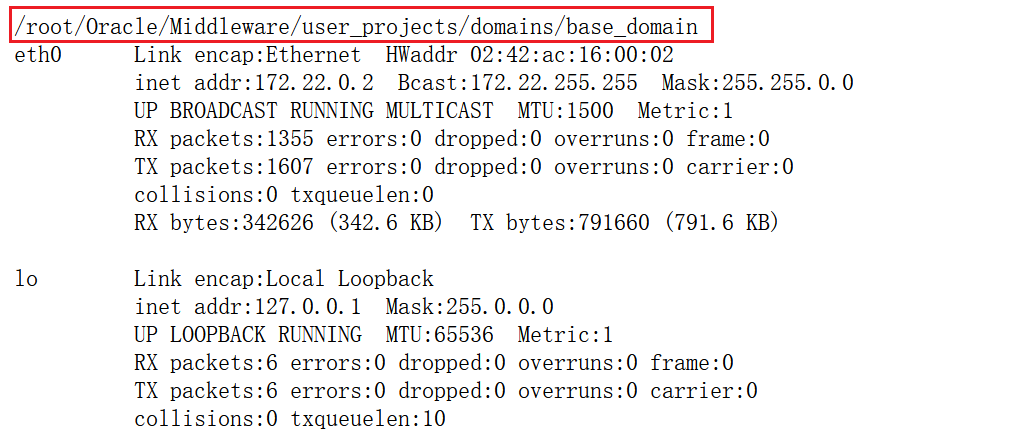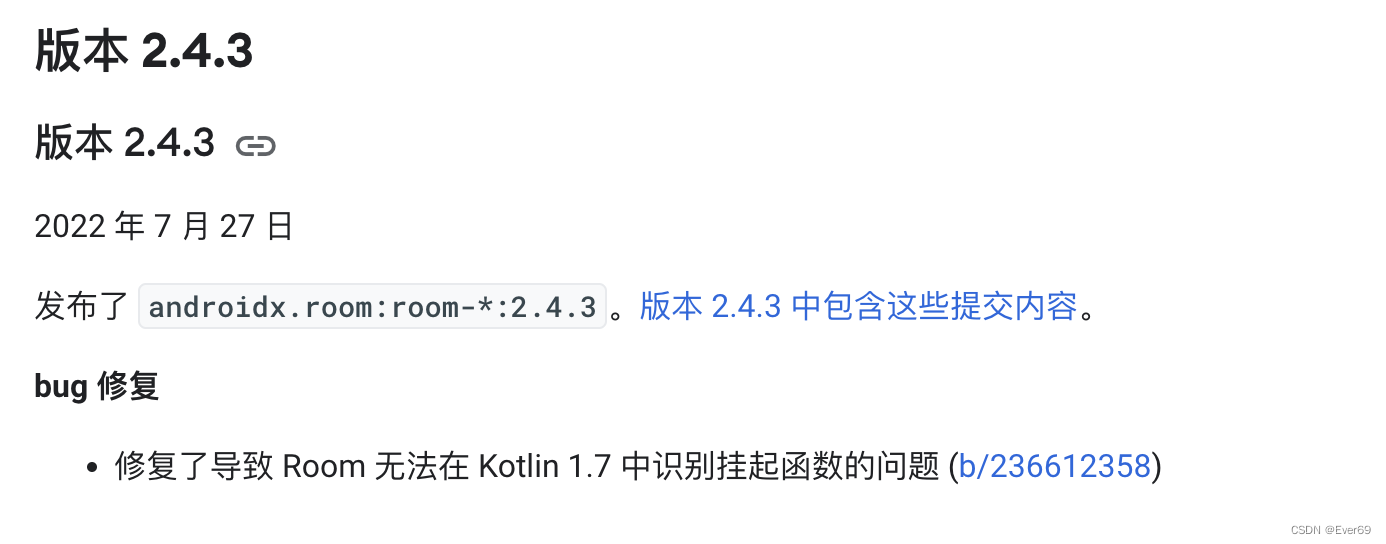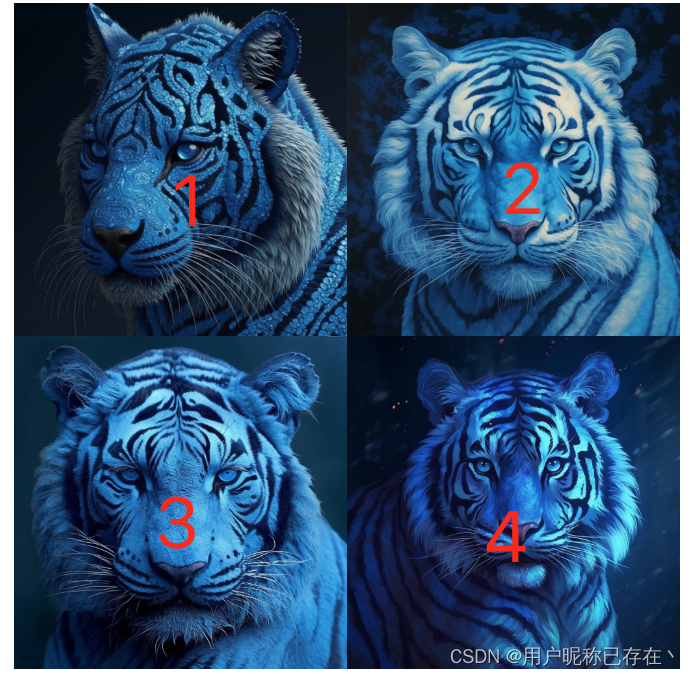深度学习笔记之递归网络——铺垫:Softmax的反向传播过程
- 引言
- 总结:递归神经网络的前馈计算过程
- 场景构建
- 前馈计算描述
- 铺垫: Softmax \text{Softmax} Softmax的反向传播过程
引言
上一节介绍了递归神经网络前馈计算过程的基本逻辑,以及作为语言模型时,衡量一个语言模型的优劣性指标——困惑度。本节介绍 Softmax \text{Softmax} Softmax函数的反向传播 ( Backward Propagation,BP ) (\text{Backward Propagation,BP}) (Backward Propagation,BP)过程。
总结:递归神经网络的前馈计算过程
场景构建
已知某特定时刻的递归神经网络神经元表示如下:

其中:
-
x t x_t xt表示数据在 t t t时刻的输入,其维度格式为 x t ∈ R n x × m × 1 x_t \in \mathbb R^{n_x \times m \times 1} xt∈Rnx×m×1。其中 n x n_x nx表示当前时刻输入向量的维数; m m m表示样本数量; 1 1 1则表示当前所在时刻 t t t。
输入向量可能是‘词向量’,或者是其他描述序列单位的向量。而n x n_x nx描述该向量的大小。-
m
m
m
可表示为当前Batch \text{Batch} Batch内的样本数量。 对应完整序列数据X \mathcal X X可表示为如下形式。其中T \mathcal T T表示输入时刻的具体数量。
X = ( x 1 , x 2 , ⋯ , x t , x t + 1 , ⋯ , x T ) T ∈ R n x × m × T \mathcal X = (x_1,x_2,\cdots,x_t,x_{t+1},\cdots,x_{\mathcal T})^T \in \mathbb R^{n_x \times m \times \mathcal T} X=(x1,x2,⋯,xt,xt+1,⋯,xT)T∈Rnx×m×T
-
h t h_t ht表示 t t t时刻的序列信息,也是要传递到 t + 1 t+1 t+1时刻的值;它的维度格式表示为:
这里n h n_h nh表示隐藏状态的维数大小;它由参数W H ⇒ H , W H ⇒ X \mathcal W_{\mathcal H \Rightarrow \mathcal H},\mathcal W_{\mathcal H \Rightarrow \mathcal X} WH⇒H,WH⇒X决定;h t + 1 ∈ R n h × m × 1 h_{t+1} \in \mathbb R^{n_h \times m \times 1} ht+1∈Rnh×m×1同理。
h t ∈ R n h × m × 1 h_t \in \mathbb R^{n_h \times m \times 1} ht∈Rnh×m×1
对应的隐藏层矩阵H ∈ R n h × m × T \mathcal H \in \mathbb R^{n_h \times m \times \mathcal T} H∈Rnh×m×T。因为每一进入一个输入,都会得到一个相应更长的序列信息。因此X , H \mathcal X,\mathcal H X,H共用同一个T \mathcal T T。 -
O t + 1 \mathcal O_{t+1} Ot+1表示数据传入后计算产生的预测值,它的维度格式表示为:
其中n O n_{\mathcal O} nO表示预测输出结果的长度。
O t + 1 ∈ R n O × m × 1 \mathcal O_{t+1} \in \mathbb R^{n_{\mathcal O} \times m \times \mathcal 1} Ot+1∈RnO×m×1
同理,对应的输出矩阵O ∈ R n O × m × T O \mathcal O \in \mathbb R^{n_{\mathcal O} \times m \times \mathcal T_{\mathcal O}} O∈RnO×m×TO,这里的T O \mathcal T_{\mathcal O} TO表示输出时刻的数量。需要注意的是,T O \mathcal T_{\mathcal O} TO和T \mathcal T T是两个概念。也就是说,输出的序列长度和输入长度无关,它与权重参数W H ⇒ O \mathcal W_{\mathcal H \Rightarrow \mathcal O} WH⇒O相关。
前馈计算描述
为了方便描述,将上述过程中的序列下标表示为序列上标:
x
t
,
h
t
,
h
t
+
1
,
O
t
+
1
⇒
x
(
t
)
,
h
(
t
)
,
h
(
t
+
1
)
,
O
(
t
+
1
)
x_t,h_t,h_{t+1},\mathcal O_{t+1} \Rightarrow x^{(t)},h^{(t)},h^{(t+1)},\mathcal O^{(t+1)}
xt,ht,ht+1,Ot+1⇒x(t),h(t),h(t+1),O(t+1)
关于第
t
t
t时刻神经元的前馈计算过程表示如下:
需要注意的是,这里的
h
(
t
+
1
)
,
O
(
t
+
1
)
h^{(t+1)},\mathcal O^{(t+1)}
h(t+1),O(t+1)表示对下一时刻信息的预测,而这个预测过程是在
t
t
t时刻完成的。
- 序列信息
h
(
t
+
1
)
h^{(t+1)}
h(t+1)的计算过程:
{ Z 1 ( t + 1 ) = W h ( t ) ⇒ h ( t + 1 ) ⋅ h ( t ) + W x ( t ) ⇒ h ( t + 1 ) ⋅ x ( t ) + b h ( t + 1 ) h ( t + 1 ) = Tanh ( Z 1 ( t ) ) \begin{cases} \mathcal Z_1^{(t+1)} = \mathcal W_{h^{(t)} \Rightarrow h^{(t+1)}}\cdot h^{(t)} + \mathcal W_{x^{(t)} \Rightarrow h^{(t+1)}} \cdot x^{(t)} + b_{h^{(t+1)}} \\ \quad \\ h^{(t+1)} = \text{Tanh}(\mathcal Z_1^{(t)}) \end{cases} ⎩ ⎨ ⎧Z1(t+1)=Wh(t)⇒h(t+1)⋅h(t)+Wx(t)⇒h(t+1)⋅x(t)+bh(t+1)h(t+1)=Tanh(Z1(t)) - 预测值
O
(
t
+
1
)
\mathcal O^{(t+1)}
O(t+1)的计算过程:
关于后验概率P m o d e l [ O ( t + 1 ) ∣ x ( t ) , h ( t + 1 ) ] \mathcal P_{model}[\mathcal O^{(t+1)} \mid x^{(t)},h^{(t+1)}] Pmodel[O(t+1)∣x(t),h(t+1)]本质上是一个分类任务——从该分布中选择概率最高的结果作为x ( t + 1 ) x^{(t+1)} x(t+1)的结果,这里使用Softmax \text{Softmax} Softmax函数对各结果对应的概率分布信息进行评估。
{ Z 2 ( t + 1 ) = W h ( t + 1 ) ⇒ O ( t + 1 ) ⋅ h ( t + 1 ) + b O ( t + 1 ) O ( t + 1 ) = Softmax ( Z 2 ( t + 1 ) ) = exp { Z 2 ( t + 1 ) } ∑ i = 1 n O exp { Z 2 ; i ( t + 1 ) } \begin{cases} \mathcal Z_2^{(t+1)} = \mathcal W_{h^{(t+1)} \Rightarrow \mathcal O^{(t+1)}} \cdot h^{(t+1)} + b_{\mathcal O^{(t+1)}} \\ \quad \\ \begin{aligned} \mathcal O^{(t+1)} & = \text{Softmax}(\mathcal Z_2^{(t+1)}) \\ & = \frac{\exp \left\{\mathcal Z_2^{(t+1)}\right\}}{\sum_{i=1}^{n_{\mathcal O}}\exp \left\{\mathcal Z_{2;i}^{(t+1)}\right\}} \\ \end{aligned} \end{cases} ⎩ ⎨ ⎧Z2(t+1)=Wh(t+1)⇒O(t+1)⋅h(t+1)+bO(t+1)O(t+1)=Softmax(Z2(t+1))=∑i=1nOexp{Z2;i(t+1)}exp{Z2(t+1)}
其中,公式中出现的各参数维度格式表示如下:
Z
1
:
{
W
h
(
t
)
⇒
h
(
t
+
1
)
∈
R
1
×
n
h
⇒
W
H
⇒
H
∈
R
n
h
×
n
h
W
x
(
t
)
⇒
h
(
t
+
1
)
∈
R
1
×
n
x
⇒
W
X
⇒
H
∈
R
n
h
×
n
x
b
h
(
t
+
1
)
∈
R
1
×
1
⇒
b
H
∈
R
n
h
×
1
Z
2
:
{
W
h
(
t
+
1
)
⇒
O
(
t
+
1
)
∈
R
⇒
W
H
⇒
O
∈
R
n
O
×
n
h
b
O
(
t
+
1
)
∈
R
1
×
1
⇒
b
O
∈
R
n
O
×
1
\begin{aligned} & \mathcal Z_1:\begin{cases} \mathcal W_{h^{(t)} \Rightarrow h^{(t+1)}} \in \mathbb R^{1 \times n_h} \Rightarrow \mathcal W_{\mathcal H \Rightarrow \mathcal H} \in \mathbb R^{n_h \times n_h} \\ \mathcal W_{x^{(t)} \Rightarrow h^{(t+1)}} \in \mathbb R^{1 \times n_x} \Rightarrow \mathcal W_{\mathcal X \Rightarrow \mathcal H} \in \mathbb R^{n_h \times n_x} \\ b_{\mathcal h^{(t+1)}} \in \mathbb R^{1 \times 1} \Rightarrow b_{\mathcal H} \in \mathbb R^{n_h \times 1} \end{cases} \\ & \mathcal Z_2:\begin{cases} \mathcal W_{h^{(t+1)} \Rightarrow \mathcal O^{(t+1)}} \in \mathbb R^{} \Rightarrow \mathcal W_{\mathcal H \Rightarrow \mathcal O} \in \mathbb R^{n_{\mathcal O} \times n_h} \\ b_{\mathcal O^{(t+1)}} \in \mathbb R^{1 \times 1} \Rightarrow b_{\mathcal O} \in \mathbb R^{n_{\mathcal O} \times 1} \end{cases} \end{aligned}
Z1:⎩
⎨
⎧Wh(t)⇒h(t+1)∈R1×nh⇒WH⇒H∈Rnh×nhWx(t)⇒h(t+1)∈R1×nx⇒WX⇒H∈Rnh×nxbh(t+1)∈R1×1⇒bH∈Rnh×1Z2:{Wh(t+1)⇒O(t+1)∈R⇒WH⇒O∈RnO×nhbO(t+1)∈R1×1⇒bO∈RnO×1
铺垫: Softmax \text{Softmax} Softmax的反向传播过程
场景构建
假设一个
L
\mathcal L
L层全连接神经网络用作
C
\mathcal C
C分类的分类任务,并且已知由
m
m
m个训练样本构成的训练集
D
\mathcal D
D:
D
=
{
(
x
(
i
)
,
y
(
i
)
)
}
i
=
1
m
\mathcal D = \{(x^{(i)},y^{(i)})\}_{i=1}^m
D={(x(i),y(i))}i=1m
中间的计算过程忽略。仅观察输出结果。设每一个
x
(
i
)
(
i
=
1
,
2
,
⋯
,
m
)
x^{(i)}(i=1,2,\cdots,m)
x(i)(i=1,2,⋯,m)的对应预测结果为
y
^
(
i
)
\hat y^{(i)}
y^(i),使用交叉熵
(
CrossEntropy
)
(\text{CrossEntropy})
(CrossEntropy)对其计算损失:
L
[
y
(
i
)
,
y
^
(
i
)
]
=
−
∑
j
=
1
C
y
j
(
i
)
log
y
^
j
(
i
)
\mathscr L \left[y^{(i)},\hat y^{(i)}\right] = -\sum_{j=1}^{\mathcal C} y_j^{(i)} \log \hat y_j^{(i)}
L[y(i),y^(i)]=−j=1∑Cyj(i)logy^j(i)
相应地,对训练集
D
\mathcal D
D的损失函数
J
(
W
)
\mathcal J(\mathcal W)
J(W)表示为:
这里将偏置项
b
b
b忽略掉了。
J
(
W
)
=
1
m
∑
i
=
1
m
L
[
y
(
i
)
,
y
^
(
i
)
]
\mathcal J(\mathcal W) = \frac{1}{m} \sum_{i=1}^m \mathscr L \left[y^{(i)},\hat y^{(i)}\right]
J(W)=m1i=1∑mL[y(i),y^(i)]
关于最后一层神经网络输出
Z
(
L
)
\mathcal Z^{(\mathcal L)}
Z(L)与
Softmax
\text{Softmax}
Softmax激活函数的前馈计算过程表示如下:
y
^
=
a
(
L
)
=
Softmax
(
Z
(
L
)
)
\hat y = a^{(\mathcal L)} = \text{Softmax}(\mathcal Z^{(\mathcal L)})
y^=a(L)=Softmax(Z(L))
Softmax \text{Softmax} Softmax反向传播过程
以单个样本
(
x
,
y
)
∈
D
(x,y) \in \mathcal D
(x,y)∈D为例。首先计算该样本的损失函数结果
L
(
y
,
y
^
)
\mathscr L(y,\hat y)
L(y,y^)关于预测输出
y
^
=
a
(
L
)
\hat y = a^{(\mathcal L)}
y^=a(L) 的导数结果:
∂
L
∂
a
(
L
)
=
∂
∂
a
(
L
)
[
−
∑
j
=
1
C
y
j
log
y
^
j
]
=
∂
∂
a
(
L
)
[
−
(
y
1
log
y
^
1
+
y
2
log
y
^
2
+
⋯
+
y
C
log
y
^
C
)
]
=
∂
∂
a
(
L
)
[
−
(
y
1
log
a
1
(
L
)
+
y
2
log
a
2
(
L
)
+
⋯
+
y
C
log
a
C
(
L
)
)
]
\begin{aligned} \frac{\partial \mathscr L}{\partial a^{(\mathcal L)}} & = \frac{\partial}{\partial a^{(\mathcal L)}} \left[-\sum_{j=1}^{\mathcal C} y_j \log \hat y_j \right] \\ & = \frac{\partial}{\partial a^{(\mathcal L)}} \left[- (y_1 \log \hat y_1 + y_2 \log \hat y_2 + \cdots + y_{\mathcal C} \log \hat y_{\mathcal C}) \right] \\ & = \frac{\partial}{\partial a^{(\mathcal L)}} \left[ - (y_1 \log a_1^{(\mathcal L)} + y_2 \log a_2^{(\mathcal L)} + \cdots + y_{\mathcal C} \log a_{\mathcal C}^{(\mathcal L)})\right] \end{aligned}
∂a(L)∂L=∂a(L)∂[−j=1∑Cyjlogy^j]=∂a(L)∂[−(y1logy^1+y2logy^2+⋯+yClogy^C)]=∂a(L)∂[−(y1loga1(L)+y2loga2(L)+⋯+yClogaC(L))]
很明显,
L
\mathscr L
L表示各维度的连加和,是一个标量;而此时的
a
(
L
)
a^{(\mathcal L)}
a(L)是一个
1
×
C
1 \times \mathcal C
1×C的向量。其求导结果表示如下:
标量对向量求导见文章末尾链接,侵删。
∂
L
∂
a
(
L
)
=
[
∂
L
∂
a
1
(
L
)
,
⋯
,
∂
L
∂
a
C
(
L
)
]
=
{
∂
∂
a
1
(
L
)
[
−
(
y
1
log
a
1
(
L
)
⏟
a
1
(
L
)
相关
+
⋯
+
y
C
log
a
C
(
L
)
⏟
a
1
(
L
)
无关
)
]
,
⋯
,
∂
∂
a
C
(
L
)
[
−
(
y
1
log
a
1
(
L
)
+
⋯
⏟
a
C
(
L
)
无关
+
y
C
log
a
C
(
L
)
⏟
a
C
(
L
)
相关
)
]
}
=
[
−
y
1
a
1
(
L
)
,
⋯
,
−
y
C
a
C
(
L
)
]
=
−
(
y
1
,
⋯
,
y
C
)
(
a
1
(
L
)
,
⋯
,
a
C
(
L
)
)
=
−
y
y
^
\begin{aligned} \frac{\partial \mathscr L}{\partial a^{(\mathcal L)}} & = \left[\frac{\partial \mathscr L}{\partial a_1^{(\mathcal L)}},\cdots,\frac{\partial \mathscr L}{\partial a_{\mathcal C}^{(\mathcal L)}}\right]\\ & = \left\{\frac{\partial}{\partial a_1^{(\mathcal L)}} \left[-(\underbrace{y_1 \log a_1^{(\mathcal L)}}_{a_1^{(\mathcal L) 相关}} + \underbrace{\cdots + y_{\mathcal C} \log a_{\mathcal C}^{(\mathcal L)}}_{a_1^{(\mathcal L)无关}})\right],\cdots,\frac{\partial}{\partial a_{\mathcal C}^{(\mathcal L)}} \left[-(\underbrace{y_1 \log a_1^{(\mathcal L)} + \cdots}_{a_{\mathcal C}^{(\mathcal L)无关}} + \underbrace{y_{\mathcal C} \log a_{\mathcal C}^{(\mathcal L)}}_{a_{\mathcal C}^{(\mathcal L)相关}})\right]\right\} \\ & = \left[-\frac{y_1}{a_1^{(\mathcal L)}},\cdots,-\frac{y_{\mathcal C}}{a_{\mathcal C}^{(\mathcal L)}}\right] \\ & = -\frac{(y_1,\cdots,y_{\mathcal C})}{\left(a_1^{(\mathcal L)},\cdots,a_{\mathcal C}^{(\mathcal L)} \right)} \\ & = -\frac{y}{\hat y} \end{aligned}
∂a(L)∂L=[∂a1(L)∂L,⋯,∂aC(L)∂L]=⎩
⎨
⎧∂a1(L)∂
−(a1(L)相关
y1loga1(L)+a1(L)无关
⋯+yClogaC(L))
,⋯,∂aC(L)∂
−(aC(L)无关
y1loga1(L)+⋯+aC(L)相关
yClogaC(L))
⎭
⎬
⎫=[−a1(L)y1,⋯,−aC(L)yC]=−(a1(L),⋯,aC(L))(y1,⋯,yC)=−y^y
继续向前传播,计算
∂
L
∂
Z
(
L
)
\begin{aligned}\frac{\partial \mathscr L}{\partial \mathcal Z^{(\mathcal L)}}\end{aligned}
∂Z(L)∂L:
∂
L
∂
Z
(
L
)
=
∂
L
∂
a
(
L
)
⋅
∂
a
(
L
)
∂
Z
(
L
)
\frac{\partial \mathscr L}{\partial \mathcal Z^{(\mathcal L)}} = \frac{\partial \mathscr L}{\partial a^{(\mathcal L)}} \cdot \frac{\partial a^{(\mathcal L)}}{\partial \mathcal Z^{(\mathcal L)}}
∂Z(L)∂L=∂a(L)∂L⋅∂Z(L)∂a(L)
关于
∂
a
(
L
)
∂
Z
(
L
)
\begin{aligned}\frac{\partial a^{(\mathcal L)}}{\partial \mathcal Z^{(\mathcal L)}}\end{aligned}
∂Z(L)∂a(L),由于
a
(
L
)
,
Z
(
L
)
a^{(\mathcal L)},\mathcal Z^{(\mathcal L)}
a(L),Z(L)均是
1
×
C
1 \times \mathcal C
1×C的向量。其导数结果表示如下:
这是一个
C
×
C
×
1
\mathcal C \times \mathcal C \times 1
C×C×1的三维张量。
∂
a
(
L
)
∂
Z
(
L
)
=
[
∂
a
(
L
)
∂
z
1
(
L
)
,
⋯
,
∂
a
(
L
)
∂
z
C
(
L
)
]
C
×
C
×
1
T
=
{
∂
∂
z
1
(
L
)
[
exp
(
Z
(
L
)
)
∑
i
=
1
C
exp
(
z
i
(
L
)
)
]
,
⋯
,
∂
∂
z
C
(
L
)
[
exp
(
Z
(
L
)
)
∑
i
=
1
C
exp
(
z
C
(
L
)
)
]
}
C
×
C
×
1
T
\begin{aligned} \frac{\partial a^{(\mathcal L)}}{\partial \mathcal Z^{(\mathcal L)}} & = \left[\frac{\partial a^{(\mathcal L)}}{\partial z_1^{(\mathcal L)}},\cdots,\frac{\partial a^{(\mathcal L)}}{\partial z_{\mathcal C}^{(\mathcal L)}}\right]_{\mathcal C \times \mathcal C \times 1}^T \\ & = \left\{\frac{\partial}{\partial z_1^{(\mathcal L)}}\left[\frac{\exp(\mathcal Z^{(\mathcal L)})}{\sum_{i=1}^{\mathcal C} \exp(z_i^{(\mathcal L)})}\right],\cdots,\frac{\partial}{\partial z_{\mathcal C}^{(\mathcal L)}} \left[\frac{\exp(\mathcal Z^{(\mathcal L)})}{\sum_{i=1}^{\mathcal C} \exp(z_{\mathcal C}^{(\mathcal L)})}\right]\right\}_{\mathcal C \times \mathcal C \times 1}^T \end{aligned}
∂Z(L)∂a(L)=[∂z1(L)∂a(L),⋯,∂zC(L)∂a(L)]C×C×1T={∂z1(L)∂[∑i=1Cexp(zi(L))exp(Z(L))],⋯,∂zC(L)∂[∑i=1Cexp(zC(L))exp(Z(L))]}C×C×1T
这里以第一项为例,不可否认的是,它是一个
1
×
C
1 \times \mathcal C
1×C的向量结果。并且
z
1
(
L
)
z_1^{(\mathcal L)}
z1(L)是一个标量,它的导数结果表示如下:
其中
exp
(
Z
(
L
)
)
∑
i
=
1
C
exp
(
z
i
(
L
)
)
\begin{aligned}\frac{\exp(\mathcal Z^{(\mathcal L)})}{\sum_{i=1}^{\mathcal C} \exp(z_i^{(\mathcal L)})}\end{aligned}
∑i=1Cexp(zi(L))exp(Z(L))是输出结果
a
(
L
)
a^{(\mathcal L)}
a(L)的第一个分量。记作
a
1
(
L
)
a_1^{(\mathcal L)}
a1(L).
∂
∂
z
1
(
L
)
[
exp
(
Z
(
L
)
)
∑
i
=
1
C
exp
(
z
i
(
L
)
)
]
=
{
∂
∂
z
1
(
L
)
[
exp
(
z
1
(
L
)
)
∑
i
=
1
C
exp
(
z
i
(
L
)
)
]
⏟
a
1
(
L
)
,
⋯
,
∂
∂
z
1
(
L
)
[
exp
(
z
C
(
L
)
)
∑
i
=
1
C
exp
(
z
i
(
L
)
)
]
⏟
a
C
(
L
)
}
1
×
C
\frac{\partial}{\partial z_1^{(\mathcal L)}}\left[\frac{\exp(\mathcal Z^{(\mathcal L)})}{\sum_{i=1}^{\mathcal C} \exp(z_i^{(\mathcal L)})}\right] = \left\{\frac{\partial}{\partial z_1^{(\mathcal L)}}\underbrace{\left[\frac{\exp(z_1^{(\mathcal L)})}{\sum_{i=1}^{\mathcal C} \exp(z_i^{(\mathcal L)})}\right]}_{a_1^{(\mathcal L)}},\cdots,\frac{\partial}{\partial z_1^{(\mathcal L)}}\underbrace{\left[\frac{\exp(z_{\mathcal C}^{(\mathcal L)})}{\sum_{i=1}^{\mathcal C} \exp(z_i^{(\mathcal L)})}\right]}_{a_{\mathcal C}^{(\mathcal L)}}\right\}_{1 \times \mathcal C}
∂z1(L)∂[∑i=1Cexp(zi(L))exp(Z(L))]=⎩
⎨
⎧∂z1(L)∂a1(L)
[∑i=1Cexp(zi(L))exp(z1(L))],⋯,∂z1(L)∂aC(L)
[∑i=1Cexp(zi(L))exp(zC(L))]⎭
⎬
⎫1×C
继续以第一项为例,关于
∂
a
1
(
L
)
∂
z
1
(
L
)
\begin{aligned}\frac{\partial a_1^{(\mathcal L)}}{\partial z_1^{(\mathcal L)}}\end{aligned}
∂z1(L)∂a1(L)结果表示如下:
除法求导~
其中
[
∑
i
=
1
C
exp
(
z
i
(
L
)
)
]
′
\left[\sum_{i=1}^{\mathcal C} \exp(z_i^{(\mathcal L)})\right]'
[∑i=1Cexp(zi(L))]′中与
z
1
(
L
)
z_1^{(\mathcal L)}
z1(L)相关的只有第一项。因此该项结果为:
exp
(
z
i
(
L
)
)
\exp(z_i^{(L)})
exp(zi(L)).
∂
a
1
(
L
)
∂
z
1
(
L
)
=
∂
∂
z
1
(
L
)
[
exp
(
Z
(
L
)
)
∑
i
=
1
C
exp
(
z
i
(
L
)
)
]
=
[
exp
(
z
1
(
L
)
)
]
′
⋅
∑
i
=
1
C
exp
(
z
i
(
L
)
)
−
exp
(
z
1
(
L
)
)
⋅
[
∑
i
=
1
C
exp
(
z
i
(
L
)
)
]
′
[
∑
i
=
1
C
exp
(
z
i
(
L
)
)
]
2
=
exp
(
z
1
(
L
)
)
⋅
∑
i
=
1
C
exp
(
z
i
(
L
)
)
−
[
exp
(
z
1
(
L
)
)
]
2
[
∑
i
=
1
C
exp
(
z
i
(
L
)
)
]
2
\begin{aligned} \frac{\partial a_1^{(\mathcal L)}}{\partial z_1^{(\mathcal L)}} & = \frac{\partial}{\partial z_1^{(\mathcal L)}}\left[\frac{\exp(\mathcal Z^{(\mathcal L)})}{\sum_{i=1}^{\mathcal C} \exp(z_i^{(\mathcal L)})}\right] \\ & = \frac{\left[\exp(z_1^{(\mathcal L)})\right]' \cdot \sum_{i=1}^{\mathcal C} \exp(z_i^{(\mathcal L)}) - \exp(z_1^{(\mathcal L)}) \cdot \left[\sum_{i=1}^{\mathcal C} \exp(z_i^{(\mathcal L)})\right]'}{\left[\sum_{i=1}^{\mathcal C} \exp(z_i^{(\mathcal L)})\right]^2} \\ & = \frac{\exp(z_1^{(\mathcal L)}) \cdot \sum_{i=1}^{\mathcal C}\exp(z_i^{(\mathcal L)}) - \left[\exp(z_1^{(L)})\right]^2}{\left[\sum_{i=1}^{\mathcal C} \exp(z_i^{(\mathcal L)})\right]^2} \end{aligned}
∂z1(L)∂a1(L)=∂z1(L)∂[∑i=1Cexp(zi(L))exp(Z(L))]=[∑i=1Cexp(zi(L))]2[exp(z1(L))]′⋅∑i=1Cexp(zi(L))−exp(z1(L))⋅[∑i=1Cexp(zi(L))]′=[∑i=1Cexp(zi(L))]2exp(z1(L))⋅∑i=1Cexp(zi(L))−[exp(z1(L))]2
分子提出
exp
(
z
1
(
L
)
)
\exp(z_1^{(\mathcal L)})
exp(z1(L)),分母平方项展开:
∂
a
1
(
L
)
∂
z
1
(
L
)
=
exp
(
z
1
(
L
)
)
⋅
[
∑
i
=
1
C
exp
(
z
i
(
L
)
)
−
exp
(
z
1
(
L
)
)
]
[
∑
i
=
1
C
exp
(
z
i
(
L
)
)
]
2
=
exp
(
z
1
(
L
)
)
∑
i
=
1
C
exp
(
z
i
(
L
)
)
⋅
∑
i
=
1
C
exp
(
z
i
(
L
)
)
−
exp
(
z
1
(
L
)
)
∑
i
=
1
C
exp
(
z
i
(
L
)
)
=
exp
(
z
1
(
L
)
)
∑
i
=
1
C
exp
(
z
i
(
L
)
)
⋅
[
1
−
exp
(
z
1
(
L
)
)
∑
i
=
1
C
exp
(
z
i
(
L
)
)
]
=
a
1
(
L
)
⋅
(
1
−
a
1
(
L
)
)
\begin{aligned} \frac{\partial a_1^{(\mathcal L)}}{\partial z_1^{(\mathcal L)}} & = \frac{\exp(z_1^{(\mathcal L)}) \cdot \left[\sum_{i=1}^{\mathcal C} \exp(z_i^{(\mathcal L)}) - \exp(z_1^{(\mathcal L)})\right]}{\left[\sum_{i=1}^{\mathcal C} \exp(z_i^{(\mathcal L)})\right]^2} \\ & = \frac{\exp(z_1^{(\mathcal L)})}{\sum_{i=1}^{\mathcal C} \exp(z_i^{(\mathcal L)})} \cdot \frac{\sum_{i=1}^{\mathcal C} \exp(z_i^{(\mathcal L)}) - \exp(z_1^{(\mathcal L)})}{\sum_{i=1}^{\mathcal C} \exp(z_i^{(\mathcal L)})} \\ & = \frac{\exp(z_1^{(\mathcal L)})}{\sum_{i=1}^{\mathcal C} \exp(z_i^{(\mathcal L)})} \cdot \left[1 - \frac{\exp(z_1^{(\mathcal L)})}{\sum_{i=1}^{\mathcal C} \exp(z_i^{(\mathcal L)})}\right] \\ & = a_1^{(\mathcal L)} \cdot (1 - a_1^{(\mathcal L)}) \end{aligned}
∂z1(L)∂a1(L)=[∑i=1Cexp(zi(L))]2exp(z1(L))⋅[∑i=1Cexp(zi(L))−exp(z1(L))]=∑i=1Cexp(zi(L))exp(z1(L))⋅∑i=1Cexp(zi(L))∑i=1Cexp(zi(L))−exp(z1(L))=∑i=1Cexp(zi(L))exp(z1(L))⋅[1−∑i=1Cexp(zi(L))exp(z1(L))]=a1(L)⋅(1−a1(L))
同理,关于两个下标参数
p
,
q
p,q
p,q;当
p
=
q
p=q
p=q时,有:
∂
a
q
(
L
)
∂
z
p
(
L
)
=
a
p
(
L
)
⋅
(
1
−
a
p
(
L
)
)
p
,
q
∈
{
1
,
2
,
⋯
,
C
}
;
p
=
q
\frac{\partial a_q^{(\mathcal L)}}{\partial z_p^{(\mathcal L)}} = a_p^{(L)} \cdot (1 - a_p^{(L)}) \quad p,q \in \{1,2,\cdots,\mathcal C\};p = q
∂zp(L)∂aq(L)=ap(L)⋅(1−ap(L))p,q∈{1,2,⋯,C};p=q
当
p
≠
q
p \neq q
p=q时,对应结果表示为:
其中
[
∂
exp
(
z
q
(
L
)
)
∂
z
p
(
L
)
]
p
≠
q
=
0
\begin{aligned}\left[\frac{\partial \exp(z_q^{(\mathcal L)})}{\partial z_p^{(\mathcal L)}}\right]_{p \neq q} = 0\end{aligned}
[∂zp(L)∂exp(zq(L))]p=q=0恒成立。
∂
a
q
(
L
)
∂
z
p
(
L
)
=
0
⋅
∑
i
=
1
C
exp
(
z
i
(
L
)
)
−
exp
(
z
q
(
L
)
)
⋅
exp
(
z
p
(
L
)
)
[
∑
i
=
1
C
exp
(
z
i
(
L
)
)
]
2
=
−
e
x
p
(
z
q
(
L
)
)
∑
i
=
1
C
exp
(
z
i
(
L
)
)
⋅
exp
(
z
p
(
L
)
)
∑
i
=
1
C
exp
(
z
i
(
L
)
)
=
−
a
p
⋅
a
q
\begin{aligned} \frac{\partial a_q^{(\mathcal L)}}{\partial z_p^{(\mathcal L)}} & = \frac{0 \cdot \sum_{i=1}^{\mathcal C} \exp(z_i^{(\mathcal L)}) - \exp(z_q^{(\mathcal L)})\cdot \exp(z_p^{(\mathcal L)})}{\left[\sum_{i=1}^{\mathcal C} \exp(z_i^{(\mathcal L)})\right]^2} \\ & = - \frac{exp(z_q^{(\mathcal L)})}{\sum_{i=1}^{\mathcal C} \exp(z_i^{(\mathcal L)})} \cdot \frac{\exp(z_p^{(\mathcal L)})}{\sum_{i=1}^{\mathcal C} \exp(z_i^{(\mathcal L)})} \\ & = -a_p \cdot a_q \end{aligned}
∂zp(L)∂aq(L)=[∑i=1Cexp(zi(L))]20⋅∑i=1Cexp(zi(L))−exp(zq(L))⋅exp(zp(L))=−∑i=1Cexp(zi(L))exp(zq(L))⋅∑i=1Cexp(zi(L))exp(zp(L))=−ap⋅aq
至此,
[
∂
a
(
L
)
∂
Z
(
L
)
]
C
×
C
×
1
\begin{aligned}\left[\frac{\partial a^{(\mathcal L)}}{\partial \mathcal Z^{(\mathcal L)}}\right]_{\mathcal C \times \mathcal C \times 1}\end{aligned}
[∂Z(L)∂a(L)]C×C×1中的所有项均可进行表示。将该三维张量进行压缩(删除最后一个维度),可以得到一个雅可比矩阵
(
Jacobian Matrix
)
(\text{Jacobian Matrix})
(Jacobian Matrix):
矩阵中的每一个元素均可使用上述两种方式进行表达。
∂
a
(
L
)
∂
Z
(
L
)
=
[
∂
a
1
(
L
)
∂
z
1
(
L
)
∂
a
1
(
L
)
∂
z
2
(
L
)
⋯
∂
a
1
(
L
)
∂
z
C
(
L
)
∂
a
2
(
L
)
∂
z
1
(
L
)
∂
a
2
(
L
)
∂
z
2
(
L
)
⋯
∂
a
2
(
L
)
∂
z
C
(
L
)
⋮
⋮
⋱
⋮
∂
a
C
(
L
)
∂
z
1
(
L
)
∂
a
C
(
L
)
∂
z
2
(
L
)
⋯
∂
a
C
(
L
)
∂
z
C
(
L
)
]
C
×
C
\frac{\partial a^{(\mathcal L)}}{\partial \mathcal Z^{(\mathcal L)}} = \begin{bmatrix} \begin{aligned}\frac{\partial a_1^{(\mathcal L)}}{\partial z_1^{(\mathcal L)}}\end{aligned} & \begin{aligned}\frac{\partial a_1^{(\mathcal L)}}{\partial z_2^{(\mathcal L)}}\end{aligned} & \cdots& \begin{aligned}\frac{\partial a_1^{(\mathcal L)}}{\partial z_{\mathcal C}^{(\mathcal L)}}\end{aligned} \\ \begin{aligned}\frac{\partial a_2^{(\mathcal L)}}{\partial z_1^{(\mathcal L)}}\end{aligned} & \begin{aligned}\frac{\partial a_2^{(\mathcal L)}}{\partial z_2^{(\mathcal L)}}\end{aligned} & \cdots& \begin{aligned}\frac{\partial a_2^{(\mathcal L)}}{\partial z_{\mathcal C}^{(\mathcal L)}}\end{aligned} \\ \vdots & \vdots &\ddots & \vdots\\ \begin{aligned}\frac{\partial a_{\mathcal C}^{(\mathcal L)}}{\partial z_1^{(\mathcal L)}}\end{aligned} & \begin{aligned}\frac{\partial a_{\mathcal C}^{(\mathcal L)}}{\partial z_2^{(\mathcal L)}}\end{aligned} & \cdots& \begin{aligned}\frac{\partial a_{\mathcal C}^{(\mathcal L)}}{\partial z_{\mathcal C}^{(\mathcal L)}}\end{aligned} \\ \end{bmatrix}_{\mathcal C \times \mathcal C}
∂Z(L)∂a(L)=
∂z1(L)∂a1(L)∂z1(L)∂a2(L)⋮∂z1(L)∂aC(L)∂z2(L)∂a1(L)∂z2(L)∂a2(L)⋮∂z2(L)∂aC(L)⋯⋯⋱⋯∂zC(L)∂a1(L)∂zC(L)∂a2(L)⋮∂zC(L)∂aC(L)
C×C
此时,对
∂
L
∂
Z
(
L
)
\begin{aligned}\frac{\partial \mathscr L}{\partial \mathcal Z^{(\mathcal L)}}\end{aligned}
∂Z(L)∂L进行表达:
其结果是一个
1
×
C
1 \times \mathcal C
1×C的向量格式。
∂
L
∂
a
(
L
)
⋅
∂
a
(
L
)
∂
Z
(
L
)
=
[
−
y
1
a
1
(
L
)
,
⋯
,
−
y
C
a
C
(
L
)
]
⋅
[
∂
a
1
(
L
)
∂
z
1
(
L
)
∂
a
1
(
L
)
∂
z
2
(
L
)
⋯
∂
a
1
(
L
)
∂
z
C
(
L
)
∂
a
2
(
L
)
∂
z
1
(
L
)
∂
a
2
(
L
)
∂
z
2
(
L
)
⋯
∂
a
2
(
L
)
∂
z
C
(
L
)
⋮
⋮
⋱
⋮
∂
a
C
(
L
)
∂
z
1
(
L
)
∂
a
C
(
L
)
∂
z
2
(
L
)
⋯
∂
a
C
(
L
)
∂
z
C
(
L
)
]
C
×
C
=
[
−
∑
i
=
1
C
y
i
a
i
(
L
)
⋅
∂
a
i
(
L
)
∂
z
1
(
L
)
,
⋯
,
−
∑
i
=
1
C
y
i
a
i
(
L
)
⋅
∂
a
i
(
L
)
∂
z
C
(
L
)
]
1
×
C
=
[
−
∑
i
=
1
C
y
i
a
i
(
L
)
⋅
∂
a
i
(
L
)
∂
z
j
(
L
)
]
1
×
C
j
=
1
,
2
,
⋯
,
C
\begin{aligned} \frac{\partial \mathscr L}{\partial a^{(\mathcal L)}} \cdot \frac{\partial a^{(\mathcal L)}}{\partial\mathcal Z^{(\mathcal L)}} & = \left[-\frac{y_1}{a_1^{(\mathcal L)}},\cdots,-\frac{y_{\mathcal C}}{a_{\mathcal C}^{(\mathcal L)}}\right] \cdot \begin{bmatrix} \begin{aligned}\frac{\partial a_1^{(\mathcal L)}}{\partial z_1^{(\mathcal L)}}\end{aligned} & \begin{aligned}\frac{\partial a_1^{(\mathcal L)}}{\partial z_2^{(\mathcal L)}}\end{aligned} & \cdots& \begin{aligned}\frac{\partial a_1^{(\mathcal L)}}{\partial z_{\mathcal C}^{(\mathcal L)}}\end{aligned} \\ \begin{aligned}\frac{\partial a_2^{(\mathcal L)}}{\partial z_1^{(\mathcal L)}}\end{aligned} & \begin{aligned}\frac{\partial a_2^{(\mathcal L)}}{\partial z_2^{(\mathcal L)}}\end{aligned} & \cdots& \begin{aligned}\frac{\partial a_2^{(\mathcal L)}}{\partial z_{\mathcal C}^{(\mathcal L)}}\end{aligned} \\ \vdots & \vdots &\ddots & \vdots\\ \begin{aligned}\frac{\partial a_{\mathcal C}^{(\mathcal L)}}{\partial z_1^{(\mathcal L)}}\end{aligned} & \begin{aligned}\frac{\partial a_{\mathcal C}^{(\mathcal L)}}{\partial z_2^{(\mathcal L)}}\end{aligned} & \cdots& \begin{aligned}\frac{\partial a_{\mathcal C}^{(\mathcal L)}}{\partial z_{\mathcal C}^{(\mathcal L)}}\end{aligned} \\ \end{bmatrix}_{\mathcal C \times \mathcal C} \\ & = \left[- \sum_{i=1}^{\mathcal C} \frac{y_i}{a_i^{(\mathcal L)}} \cdot \frac{\partial a_i^{(\mathcal L)}}{\partial z_1^{(\mathcal L)}},\cdots,- \sum_{i=1}^{\mathcal C} \frac{y_i}{a_i^{(\mathcal L)}} \cdot \frac{\partial a_i^{(\mathcal L)}}{\partial z_{\mathcal C}^{(\mathcal L)}}\right]_{1 \times \mathcal C} \\ & = \left[- \sum_{i=1}^{\mathcal C} \frac{y_i}{a_i^{(\mathcal L)}} \cdot \frac{\partial a_i^{(\mathcal L)}}{\partial z_j^{(\mathcal L)}}\right]_{1 \times \mathcal C} \quad j =1,2,\cdots,\mathcal C \end{aligned}
∂a(L)∂L⋅∂Z(L)∂a(L)=[−a1(L)y1,⋯,−aC(L)yC]⋅
∂z1(L)∂a1(L)∂z1(L)∂a2(L)⋮∂z1(L)∂aC(L)∂z2(L)∂a1(L)∂z2(L)∂a2(L)⋮∂z2(L)∂aC(L)⋯⋯⋱⋯∂zC(L)∂a1(L)∂zC(L)∂a2(L)⋮∂zC(L)∂aC(L)
C×C=[−i=1∑Cai(L)yi⋅∂z1(L)∂ai(L),⋯,−i=1∑Cai(L)yi⋅∂zC(L)∂ai(L)]1×C=[−i=1∑Cai(L)yi⋅∂zj(L)∂ai(L)]1×Cj=1,2,⋯,C
将
∂
a
i
(
L
)
∂
z
j
(
L
)
(
i
,
j
∈
{
1
,
2
,
⋯
,
C
}
)
=
{
a
i
(
1
−
a
j
)
i
=
j
−
a
i
⋅
a
j
i
≠
j
\begin{aligned}\frac{\partial a_i^{(\mathcal L)}}{\partial z_j^{(\mathcal L)}}(i,j \in \{1,2,\cdots,\mathcal C\}) = \begin{cases}a_i(1 - a_j) \quad i = j \\ -a_i \cdot a_j \quad i \neq j \end{cases}\end{aligned}
∂zj(L)∂ai(L)(i,j∈{1,2,⋯,C})={ai(1−aj)i=j−ai⋅aji=j两种情况代入到上式中:
可以消掉
a
i
(
L
)
a_i^{(\mathcal L)}
ai(L).
需要注意的是,这里的连加号
∑
i
=
1
C
\sum_{i=1}^{\mathcal C}
∑i=1C是均满足条件时的累加结果。如果只有一项满足条件,那么
C
=
1
\mathcal C = 1
C=1,以此类推。
−
∑
i
=
1
C
y
i
a
i
(
L
)
⋅
∂
a
i
(
L
)
∂
z
j
(
L
)
=
{
∑
i
=
1
C
y
i
⋅
a
j
(
L
)
−
y
i
i
=
j
∑
i
=
1
C
y
i
⋅
a
j
(
L
)
i
≠
j
- \sum_{i=1}^{\mathcal C} \frac{y_i}{a_i^{(\mathcal L)}} \cdot \frac{\partial a_i^{(\mathcal L)}}{\partial z_j^{(\mathcal L)}} = \begin{cases} \begin{aligned} & \sum_{i=1}^{\mathcal C} y_i \cdot a_j^{(\mathcal L)} - y_i \quad i = j \\ & \sum_{i=1}^{\mathcal C} y_i \cdot a_j^{(\mathcal L)} \quad i \neq j \end{aligned} \end{cases}
−i=1∑Cai(L)yi⋅∂zj(L)∂ai(L)=⎩
⎨
⎧i=1∑Cyi⋅aj(L)−yii=ji=1∑Cyi⋅aj(L)i=j
关于
[
∂
L
∂
a
(
L
)
⋅
∂
a
(
L
)
∂
Z
(
L
)
]
1
×
C
\begin{aligned} \left[\frac{\partial \mathscr L}{\partial a^{(\mathcal L)}} \cdot \frac{\partial a^{(\mathcal L)}}{\partial\mathcal Z^{(\mathcal L)}}\right]_{1 \times \mathcal C}\end{aligned}
[∂a(L)∂L⋅∂Z(L)∂a(L)]1×C中的结果,其每一项内的连加项中,只有一项是
i
=
j
i = j
i=j的情况。因而对
1
×
C
1 \times \mathcal C
1×C向量中的每一项均执行如下操作:
就是分成
i
=
j
i = j
i=j的
1
1
1项与
i
≠
j
i \neq j
i=j的
C
−
1
\mathcal C - 1
C−1项分别运算。
其中
∑
i
=
1
C
y
i
\begin{aligned}\sum_{i=1}^{\mathcal C}y_i\end{aligned}
i=1∑Cyi是真实标签向量各分量之和。而真实标签中只有
{
0
,
1
}
\{0,1\}
{0,1}两种元素(是该分类的为
1
1
1,不是该分类的为
0
0
0)因此,
∑
i
=
1
C
y
i
\begin{aligned}\sum_{i=1}^{\mathcal C}y_i\end{aligned}
i=1∑Cyi = 1.
−
∑
i
=
1
C
y
i
a
i
(
L
)
⋅
∂
a
i
(
L
)
∂
z
j
(
L
)
=
−
y
j
+
y
j
⋅
a
j
(
L
)
⏟
i
=
j
+
∑
i
≠
j
y
i
⋅
a
i
(
L
)
⏟
i
≠
j
=
−
y
j
+
(
y
j
⋅
a
j
(
L
)
+
∑
i
≠
j
y
i
⋅
a
j
(
L
)
)
=
−
y
j
+
a
j
(
L
)
⋅
∑
i
=
1
C
y
i
=
a
j
(
L
)
−
y
j
\begin{aligned} -\sum_{i=1}^{\mathcal C} \frac{y_i}{a_i^{(\mathcal L)}} \cdot \frac{\partial a_i^{(\mathcal L)}}{\partial z_j^{(\mathcal L)}} & = \underbrace{-y_j + y_j \cdot a_j^{(\mathcal L)}}_{i = j} + \underbrace{\sum_{i \neq j} y_i \cdot a_i^{(\mathcal L)}}_{i \neq j} \\ & = -y_j + \left(y_j \cdot a_j^{(\mathcal L)} + \sum_{i \neq j} y_i \cdot a_j^{(\mathcal L)}\right) \\ & = -y_j + a_j^{(\mathcal L)} \cdot \sum_{i=1}^{\mathcal C}y_i \\ & = a_j^{(\mathcal L)} - y_j \end{aligned}
−i=1∑Cai(L)yi⋅∂zj(L)∂ai(L)=i=j
−yj+yj⋅aj(L)+i=j
i=j∑yi⋅ai(L)=−yj+
yj⋅aj(L)+i=j∑yi⋅aj(L)
=−yj+aj(L)⋅i=1∑Cyi=aj(L)−yj
这仅仅是一个分量的结果,所有分量的结果组成一个
1
×
C
1 \times \mathcal C
1×C的向量:
[
a
j
(
L
)
−
y
j
]
1
×
C
j
=
1
,
2
,
⋯
,
C
⇒
a
(
L
)
−
y
\left[a_j^{(\mathcal L)} - y_j\right]_{1 \times \mathcal C} \quad j = 1,2,\cdots,\mathcal C \Rightarrow a^{(\mathcal L)} - y
[aj(L)−yj]1×Cj=1,2,⋯,C⇒a(L)−y
由于
a
(
L
)
=
y
^
a^{(\mathcal L)} = \hat y
a(L)=y^,因此对于递归神经网络中某时刻条件下,
∂
L
∂
Z
(
L
)
\begin{aligned}\frac{\partial \mathscr L}{\partial \mathcal Z^{(\mathcal L)}}\end{aligned}
∂Z(L)∂L中某分量
i
(
i
∈
{
1
,
2
,
⋯
,
C
}
)
i(i \in \{1,2,\cdots,\mathcal C\})
i(i∈{1,2,⋯,C})结果可表示为:
y
^
i
(
t
)
−
I
i
;
y
(
t
)
\hat y_i^{(t)} - \mathbb I_{i;y^{(t)}}
y^i(t)−Ii;y(t)
其实它描述的就是各分量的相减结果:
对应《机器学习》(花书) P234 10.2.2 公式10.18
(
y
^
1
(
t
)
y
^
2
(
t
)
⋮
y
^
C
(
t
)
)
−
(
y
1
(
t
)
y
2
(
t
)
⋮
y
C
(
t
)
)
∑
i
=
1
C
y
i
(
t
)
=
1
;
y
i
(
t
)
∈
{
0
,
1
}
\begin{pmatrix} \hat y_1^{(t)} \\ \hat y_2^{(t)} \\ \vdots \\ \hat y_{\mathcal C}^{(t)} \\ \end{pmatrix} - \begin{pmatrix} y_1^{(t)} \\ y_2^{(t)} \\ \vdots \\ y_{\mathcal C}^{(t)} \\ \end{pmatrix} \quad \sum_{i=1}^{\mathcal C} y_i^{(t)} = 1;y_i^{(t)} \in \{0,1\}
y^1(t)y^2(t)⋮y^C(t)
−
y1(t)y2(t)⋮yC(t)
i=1∑Cyi(t)=1;yi(t)∈{0,1}
下一节介绍递归神经网络的反向传播过程(写不下了)。
相关参考:
向量对向量求导
关于 Softmax 回归的反向传播求导数过程



















